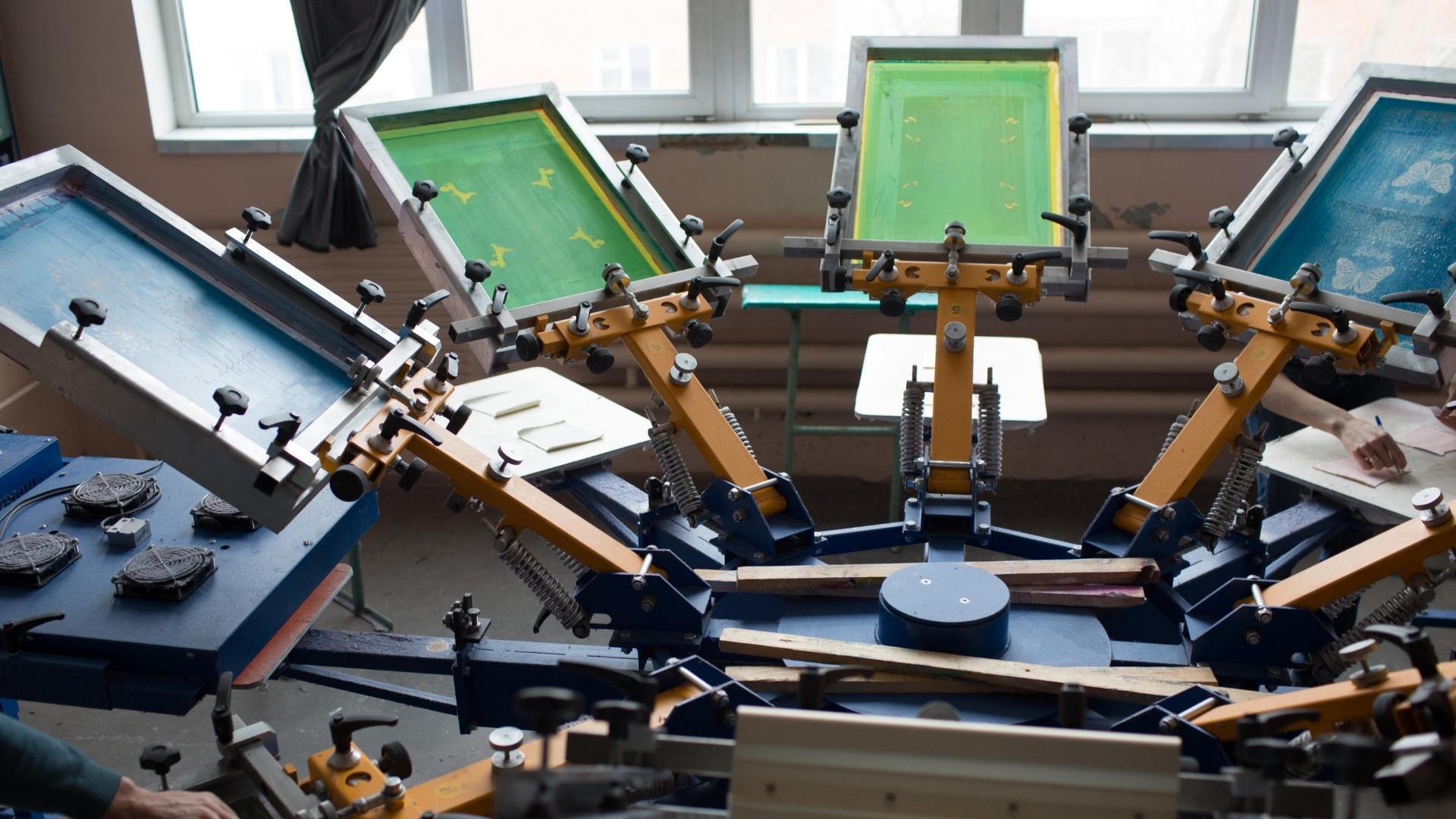ChatGPT said: 10:9 Design Screen Printing Texas: packages explained
Wiki Article
The Important Overview to Recognizing Screen Printing and Its Versatile Uses
Screen printing has an abundant background that dates back to old times, progressing right into a sophisticated technique made use of across different industries today. This guide explores the details of the screen printing process, outlining its applications in fashion, advertising, and home design - 10:9 Design reviews. Understanding these principles can open creative capacity for both industrial and artistic projects. The complying with sections will expose essential suggestions and methods to enhance one's screen printing venturesThe History of Screen Printing
Screen printing has origins that trace back centuries, its evolution mirrors the technical and imaginative advancements of different cultures. Coming from in old China, the strategy was at first utilized for embellishing fabrics and later spread to Japan, where it ended up being integral to Ukiyo-e woodblock printing. The approach shifted to Europe in the 18th century, where it obtained appeal amongst artisans and industrial printers. The invention of image solution in the 20th century reinvented screen printing, enabling even more elaborate styles and higher effectiveness. Musicians like Andy Warhol even more pushed its popularity, using the medium to create renowned jobs that mixed commercialism and art. By the late 20th century, screen printing had actually established itself as a flexible strategy, utilized in fashion, advertising and marketing, and art. Today, it remains to progress, incorporating digital innovation and increasing its applications across various markets.The Screen Printing Process Explained
Screen printing transforms artistic visions right into substantial designs via a collection of specific actions. Originally, an image is produced and afterwards transferred onto a screen, commonly made from great mesh textile stretched over a structure. A light-sensitive emulsion is used to the screen, which is revealed to light, solidifying in locations not covered by the picture. After rinsing the unhardened solution, a stencil is created.Next off, the screen is positioned over the substrate, whether it be material, paper, or one more product. Ink is then pushed with the open areas of the stencil making use of a squeegee, depositing the layout onto the substrate below. This procedure can be duplicated for multiple shades, requiring different screens for each shade. The printed thing is healed using heat to assure the ink adheres properly, resulting in a resilient, lively design ready for usage.
Kinds of Screen Printing Techniques

In addition, specialty methods, such as discharge screen printing, eliminate dye from the fabric to produce softer prints, while aluminum foil screen printing applies metal foil to accomplish a shiny finish (10:9 Design Screen Printing). Each strategy supplies unique features, accommodating different imaginative needs and manufacturing scales, inevitably increasing the possibilities within the screen printing domain
Applications of Screen Printing in Different Industries

Furthermore, the signage and advertising and marketing sectors make use of screen printing for producing appealing screens and banners. This technique permits for vibrant shades and detailed designs that catch interest. In electronics, screen printing is used for applying conductive inks to circuit boards, vital for part links. Additionally, the home style industry welcomes screen printing to create distinctive styles on textiles and wall surface art. On the whole, screen printing works as a crucial tool throughout diverse fields, improving products with personalized and aesthetically appealing graphics.
Tips for Effective Screen Printing Projects
While carrying out a screen printing job, cautious interest to information can considerably boost the last result. First, choosing high-quality products is crucial; this includes the screen, inks, and substrates. Making use of suitable mesh counts can affect ink deposition and detail resolution. Preparation is just as crucial; extensive cleaning of displays and appropriate exposure times guarantee crisp prints.Next off, accurate enrollment is essential for multi-color prints. Making use of placement tools can help attain precise layering. In addition, testing prints on scrap materials prior to manufacturing assists identify potential problems without losing resources.

Often Asked Concerns
What Products Are Finest for Screen Printing on Material?
Cotton and polyester blends are ideal for screen printing on textile as a result of their longevity and ink absorption. Additionally, specialty materials like silk or canvas can create special structures and surfaces, boosting the total design high quality.How Do I Tidy and Maintain Screen Printing Tools?
To keep and cleanse screen printing devices, one should frequently clean screens with suitable solvents, evaluate squeegees for wear, lubricate moving parts, and shop all products in a dry, dust-free setting to extend their lifespan.What Are the Ecological Influences of Screen Printing?
Screen printing can have considerable environmental impacts, consisting of chemical waste from solvents and inks, water usage during cleaning processes, and power intake. Eco-friendly materials and lasting techniques are important for reducing these adverse results.Can Screen Printing Be Done in the house Efficiently?
Screen printing can be effectively done at home with the right products and strategies. Enthusiasts can create quality prints, though success depends upon their ability degree, tools, and understanding of the process included.
What Are the Prices Related To Beginning a Screen Printing Service?

Beginning a screen printing business involves costs for equipment, materials, and work area. Preliminary expenditures commonly range from a couple of hundred to numerous thousand dollars, relying on the scale, high quality of machinery, and desired manufacturing ability.
Screen printing has a rich background that dates back to old times, advancing into an advanced method used throughout numerous industries today. Another method, rotary screen printing, employs cylindrical displays, facilitating continual printing on material rolls, thereby enhancing effectiveness for large-scale manufacturings. In addition, specialized methods, such as discharge screen printing, remove dye from the textile to develop softer prints, while aluminum foil screen printing applies metallic foil to accomplish a shiny finish. In the style sector, screen printing is commonly official source made use of to create dynamic layouts on garments, making it possible for brand names to display their one-of-a-kind designs. Cotton and polyester blends are optimal for screen printing on material due to their sturdiness and ink absorption.
Report this wiki page